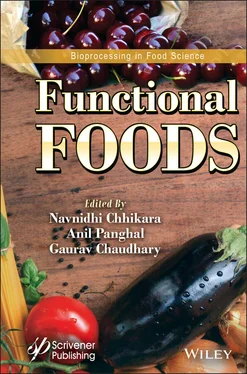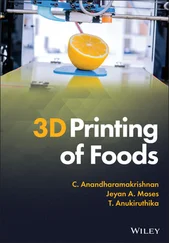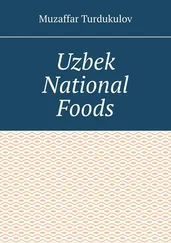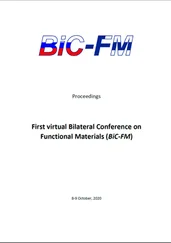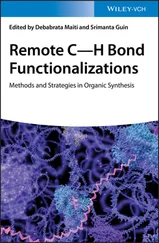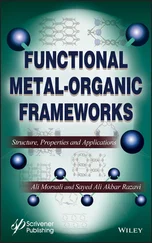Functional Foods
Здесь есть возможность читать онлайн «Functional Foods» — ознакомительный отрывок электронной книги совершенно бесплатно, а после прочтения отрывка купить полную версию. В некоторых случаях можно слушать аудио, скачать через торрент в формате fb2 и присутствует краткое содержание. Жанр: unrecognised, на английском языке. Описание произведения, (предисловие) а так же отзывы посетителей доступны на портале библиотеки ЛибКат.
- Название:Functional Foods
- Автор:
- Жанр:
- Год:неизвестен
- ISBN:нет данных
- Рейтинг книги:3 / 5. Голосов: 1
-
Избранное:Добавить в избранное
- Отзывы:
-
Ваша оценка:
- 60
- 1
- 2
- 3
- 4
- 5
Functional Foods: краткое содержание, описание и аннотация
Предлагаем к чтению аннотацию, описание, краткое содержание или предисловие (зависит от того, что написал сам автор книги «Functional Foods»). Если вы не нашли необходимую информацию о книге — напишите в комментариях, мы постараемся отыскать её.
Presenting cutting-edge information on new and emerging food engineering processes,
, the second volume in the groundbreaking new series, “Bioprocessing in Food Science,” is an essential reference on the modeling, quality, safety, and technologies associated with food processing operations today.
This outstanding new volume:
Audience: Functional Foods
Functional Foods — читать онлайн ознакомительный отрывок
Ниже представлен текст книги, разбитый по страницам. Система сохранения места последней прочитанной страницы, позволяет с удобством читать онлайн бесплатно книгу «Functional Foods», без необходимости каждый раз заново искать на чём Вы остановились. Поставьте закладку, и сможете в любой момент перейти на страницу, на которой закончили чтение.
Интервал:
Закладка:
Millet contains carbohydrates at a proportion of 65%–75%, together with 15%–20% dietary fiber and 5%–10% protein [222, 223]. The levels of soluble fiber and insoluble fiber in millet are 2.5% and 19.5%, respectively [223, 224]. Millet is a valuable food in terms of its high ratios of minerals, most particularly calcium, iron, and phosphorus [223, 225]. It also contains significant levels of various polyphenols. Total polyphenol content has been reported to be between 37.76 and 50.54 ferulic acid equivalent mg/100 g dry matter in 8 dehulled varieties of millet and 53.31–106.23 ferulic acid equivalent mg/100 g dry matter in 8 wholegrain varieties [220, 221].
It is known that millet has various advantages for human health, such as making a contribution in preventing cancers and cardiovascular diseases, decreasing high blood pressure levels, decreasing the risks of heart disease, supplying gastrointestinal bulk and delaying gastric emptying, and exhibiting antioxidant and hypocholesterolemic properties due to the polyphenols and dietary fiber in its structure [34, 223, 226–228].
Sorghum bicolor (L.) Moench, simply known as sorghum, is the 5th most important cereal globally. The production of sorghum is generally more economical because it performs better than other cereals under several environmental stresses. Over 35% of the world’s sorghum is directly used for consumption by humans, while the remainder is utilized mostly for alcohol, animal feeds, and industrial products. The largest sorghum producer and exporter globally is the United States [229].
Sorghum’s chemical composition is, on average, 12.71% moisture, 3.10% fat, 11.46% protein, 1.55% ash, 2.05% fiber, and 71.19% total carbohydrates. Tannins are among the polyphenols known to reduce the nutritional quality of sorghum [230]. The tannin content of different sorghum varieties is about 0.23% catechin equivalents on dry basis [231, 232]. Sorghum contains high amounts of iron and zinc. Oleic acid (18: 1) and linoleic acid (18: 2) are also present as major fatty acids of sorghum [230].
Studies have reported that sorghum has various potential health and pharmaceutical benefits. These can be summarized as slow digestibility, anti-inflammatory, antioxidant, cholesterol-lowering, and anti-carcinogenic benefits [233–235].
Maize (Zea mays L.), the plant from which corn is obtained, is globally among the most important and popular agricultural crops [236, 237]. It is mainly considered as a source of feed (60%) and is also used as a source of human sustenance (24%), industrial products (starches) (14%), beverages (1%), and seeds (1%) [237–240]. About 9000 years ago, maize was encountered in the Mesoamerican region known as Mexico and Central America, and at that time it was called as wild grass or “teosinte” [241–243]. Today, it is cultivated in many places such as Africa, Middle Eastern countries, Pakistan and India, Brazil, Malaysia, the southern parts of the United States, and Turkey [243].
According to the studies of Qamar et al . [243], maize grains have moisture contents that range from 8.98% to 10.45%, ash contents from 0.81% to 1.35%, crude fiber contents from 0.79% to 2.78%, and crude protein contents from 11.05% to 12.79%. Reasonable amounts of flavonoid compounds and phenolic acids, including vanillic, coumaric, syringic, ferulic, and caffeic acids, can also be found in maize grains [244–247]. Minerals (Mg, K, P), vitamins (A, B, K, E), and carotenoids are among other nutrients and phytochemicals found in maize.
Increasing numbers of academic studies prove that frequently consuming maize can lower one’s risks of developing chronic diseases including type-2 diabetes mellitus, cardiovascular disease, or obesity, as well as improving digestive health [248].
Secale cereale L., or rye, is a low-yielding product that has long, weak straws [249, 250]. It tolerates both cold climates and less fertile soils. It is considered the main cereal in Northern and Central Europe, in areas in which wheat cannot be cultivated [251]. Although total rye production has decreased over the years, its usage in food products has grown somewhat since the 1990s [249, 250]. Annual rye production is about 18 million tons [252]. Approximately 1/3 of the rye produced worldwide is consumed as food by people. The rest of it is utilized as feed [249, 250].
Rye is reported as a valuable resource for obtaining polyphenols, dietary fiber, protein, vitamins B and E, assorted trace elements, and various minerals [253–255]. The most abundant polyphenol in the rye is ferulic acid; furthermore, the presence of vanillic, p -coumaric, caffeic, sinapic, and ferulic acids has also been determined [256–258]. The protein content of rye is 9.0 to 15.4 g/100 g on a dry basis, while the ash amount is about 1.61 to 2.24 g/100 g on a dry basis [259, 260]. Rye’s highest sugar component is sucrose (0.7 g/100 g dry matter), followed respectively by glucose, fructose, raffinose, and stachyose (<0.1 g/100 g dry matter) [259, 261]. The starch contents of rye have been measured to be 60.3 g/100 g dry matter [262]. Furthermore, rye contains considerably more pentosans and hemicellulose compared to other grains. Possessing water solubility, pentosans lead to the formation of a viscous solution during dough formation [263–267].
High consumption of rye has a positive effect on digestion while simultaneously reducing risks of coronary heart disease, hypercholesterolemia, non-insulin-dependent diabetes mellitus, and obesity. Furthermore, it has been demonstrated in multiple studies that consuming rye can generate a preventive effect against some hormonally driven cancers like breast and colon cancer [260, 268–272].
3.3 Functional Foods Produced from Cereal Grains
3.3.1 Baked Products and Breakfast Cereals
As a logical outcome of the growing demands for healthy food items, the baked-goods industry has been commissioning R&D studies of functional foods and ingredients. In light of the advantageous effects that they have for human health, as mentioned above, cereals are used for designing new functional foods. Cereals are used as important alternatives when producing new food items such as breads, flat breads (pita breads), pan breads, breakfast cereals, cookies, cakes, pasta, and extruded snacks. Cereals can be used as prebiotics in the design of new prebiotic foods [8, 37]. The water-soluble fibers in cereals, including beta-glucans, pentosans, oligosaccharides, and resistant starches, act as a prebiotic medium. Starch or starch derivatives in cereals may be utilized as materials for the encapsulation of probiotics. These provide improvement of the stability of probiotics during processing, storage, and distribution and protection of probiotics from adverse conditions of the human gastrointestinal tract [37, 248, 273].
3.3.2 Multigrain Functional Beverages
Multigrain beverages are very beneficial products as functional drinks designed with the combination of bioactive substances of various cereals within liquid media. These healthy beverages contain high soluble fiber and polyphenols. The soluble fiber in the beverages slows down the digestion and absorption of the beverage and lowers their glycemic index. Polyphenols are able to act as scavengers of the free radicals that occur within the human body due to their high antioxidant capacity. Multigrain beverages can be produced with milk or water. Their processing can include steps of soaking, malting, sprouting, grinding, cooking, and/or filtering. Additives can also be included in the formulation for improving the overall quality of these drinks. To obtain a fermented beverage or prebiotic, a fermentation stage is required. Enzyme treatment can be used for non-fermented beverages. Kunan-Zaki made from maize and millet, Champuz produced by fermentation of corn and rice, and Kali obtained from fermented rice are examples of multigrain functional beverages [62]. Apart from these, some of the known multigrain beverages are listed below in Table 3.1with their countries of origin.
Читать дальшеИнтервал:
Закладка:
Похожие книги на «Functional Foods»
Представляем Вашему вниманию похожие книги на «Functional Foods» списком для выбора. Мы отобрали схожую по названию и смыслу литературу в надежде предоставить читателям больше вариантов отыскать новые, интересные, ещё непрочитанные произведения.
Обсуждение, отзывы о книге «Functional Foods» и просто собственные мнения читателей. Оставьте ваши комментарии, напишите, что Вы думаете о произведении, его смысле или главных героях. Укажите что конкретно понравилось, а что нет, и почему Вы так считаете.
